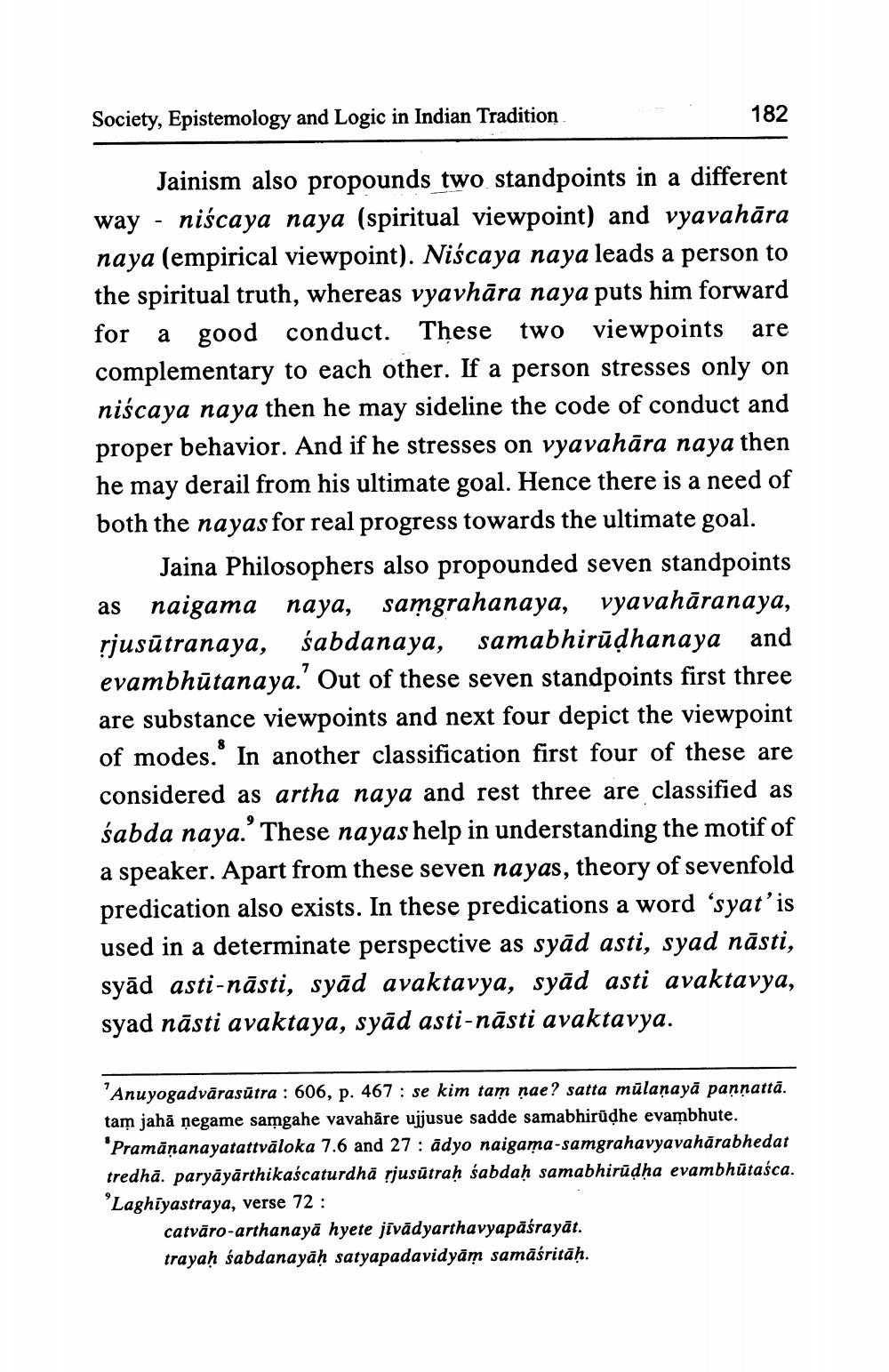________________
Society, Epistemology and Logic in Indian Tradition
Jainism also propounds two standpoints in a different way niscaya naya (spiritual viewpoint) and vyavahāra naya (empirical viewpoint). Niścaya naya leads a person to the spiritual truth, whereas vyavhāra naya puts him forward for a good conduct. These two viewpoints are complementary to each other. If a person stresses only on niscaya naya then he may sideline the code of conduct and proper behavior. And if he stresses on vyavahāra naya then he may derail from his ultimate goal. Hence there is a need of both the nayas for real progress towards the ultimate goal.
182
Jaina Philosophers also propounded seven standpoints naigama naya, samgrahanaya, vyavahāranaya, ṛjusūtranaya, sabdanaya, samabhirūḍhanaya and evambhūtanaya.' Out of these seven standpoints first three are substance viewpoints and next four depict the viewpoint of modes. In another classification first four of these are considered as artha naya and rest three are classified as sabda naya.' These nayas help in understanding the motif of a speaker. Apart from these seven nayas, theory of sevenfold predication also exists. In these predications a word 'syat' is used in a determinate perspective as syād asti, syad nāsti, syād asti-nāsti, syad avaktavya, syad asti avaktavya, syad nästi avaktaya, syād asti-nāsti avaktavya.
as
'Anuyogadvarasutra: 606, p. 467: se kim tam nae? satta mulaṇayā paṇṇattā. tam jahā negame samgahe vavahare ujjusue sadde samabhirūḍhe evambhute. 'Pramāṇanayatattväloka 7.6 and 27: adyo naigama-samgrahavyavahārabhedat tredha. paryāyārthikaścaturdhā ṛjusūtraḥ śabdaḥ samabhirūḍḥa evambhūtasca. 'Laghiyastraya, verse 72:
catvāro-arthanaya hyete jīvādyarthavyapāśrayāt. trayaḥ śabdanayaḥ satyapadavidyām samāśritāḥ.




